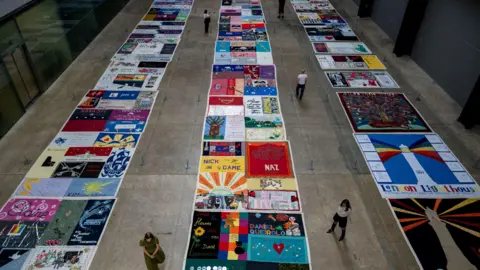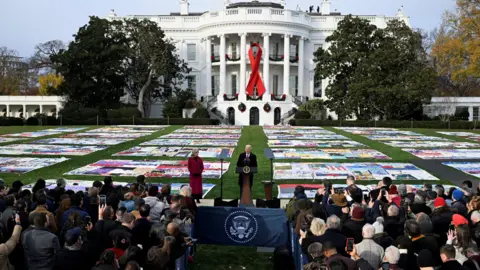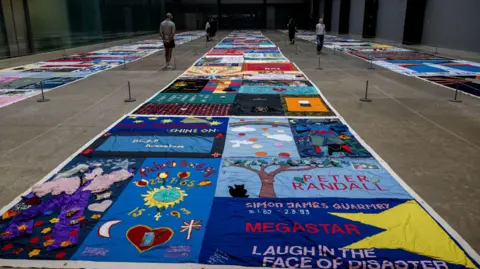Calls for Aids quilt to be brought home to Edinburgh
 Reuters
Reuters
The man behind a memorial quilt which was created to remember people who died from HIV and Aids wants to bring it back to Scotland more than 30 years later.
Campaigner Ally van Tillo took charge of the UK-wide project in Edinburgh in the early days of the Aids epidemic in the late 1980s.
He helped set up the Names Project UK after seeing the US version of the memorial and gathered contributions from people across the country who had lost loved ones to the virus.
The quilt was recently brought out of storage for an exhibition at the Tate Modern in London, attracting 70,000 visitors. Now Ally wants it to go on display in Scotland.
The quilt is made up of 6ft by 3ft panels of fabric. Each one is created in memory of someone who died from Aids.
The massive artwork is seen as a unique document of social history, representing 384 people from all around the UK.
It is designed to remind people how far the fight against HIV has come – and how the virus no longer stops people living long and healthy lives.
Mr Van Tillo said it was just as important for people to see it and understand its meaning today as it was when it was first created.
In total there are 42 twelve foot by twelve foot panels, each comprising up to eight smaller panels.
Some of the lives remembered on it include those of the writer Bruce Chatwin, actors Ian Charleson and Denham Elliot, gay rights activist Mark Ashton and the photographer Robert Mapplethorpe.
In addition, emotive testimonials, photos, and personal documents that tell the story behind the panel accompany many of the quilt panels.
 Reuters
ReutersThe original quilt project started in America in the 1980s, and it inspired Mr Van Tillo, formerly known as Alasdair Hume.
"It was in Edinburgh for an exhibition," he said. "It had come over from San Francisco during the festival.
"And I was thinking, why don't we have one here?"
He found the beginnings of a similar project based in Bournemouth and met the organisers.
He offered to look after the project, and it evolved.
Siobhan Lanigan works with Aids Quilt UK, the charity which currently looks after the quilt.
She said there had been a stigma around Aids in the 1980s.
"Sometimes people couldn't be buried," she said.
"Funeral directors wouldn't accept the bodies of people who had died with Aids.
"Many families rejected their family members and would have nothing to do with them."
 Reuters
ReutersShe said the quilt was a memorial to the people who had died, a campaigning tool and a protest about the fact that the deaths were happening.
"Society didn't seem to be taking it seriously in terms of finding a vaccine, finding the medications that were needed, doing the work that was needed," she added.
The panel size was chosen to represent a typical grave plot. The sections would be made by family, friends, lovers, partners, cousins, uncles, aunts - anyone who had cared for the person who had died and who wanted to celebrate and commemorate their lives.
Things were sewn in that were very personal to the person being remembered, like a ring or a cassette tape.
Completed panels were sent to Edinburgh where they were sewn into blocks of eight panels, creating a 12ft by 12ft fabric display.
Following the success of the Tate exhibition, Ally is keen to see the quilt in Scotland again.
"To see it back in Edinburgh or Scotland just being shown would be brilliant," he said.
"Especially to myself and my husband Ian, I think it would mean rather a lot."
He added: "We cannot forget, because it's through forgetting that we're seeing all these rights being taken away from people again."
Ms Lanigan is similarly enthusiastic.
"There are still people all over the world who are dying as a result of HIV," she said.
"So the quilt is a very powerful reminder that we still need to do the work to end that. We haven't got a vaccine. We haven't got a cure.
"Scotland is our next goal. We would love to see the quilt back in Scotland where it was created.
"We want people to be able to see it without having to pay to see it, because again, that was part of its purpose, that people should be able to see it."
